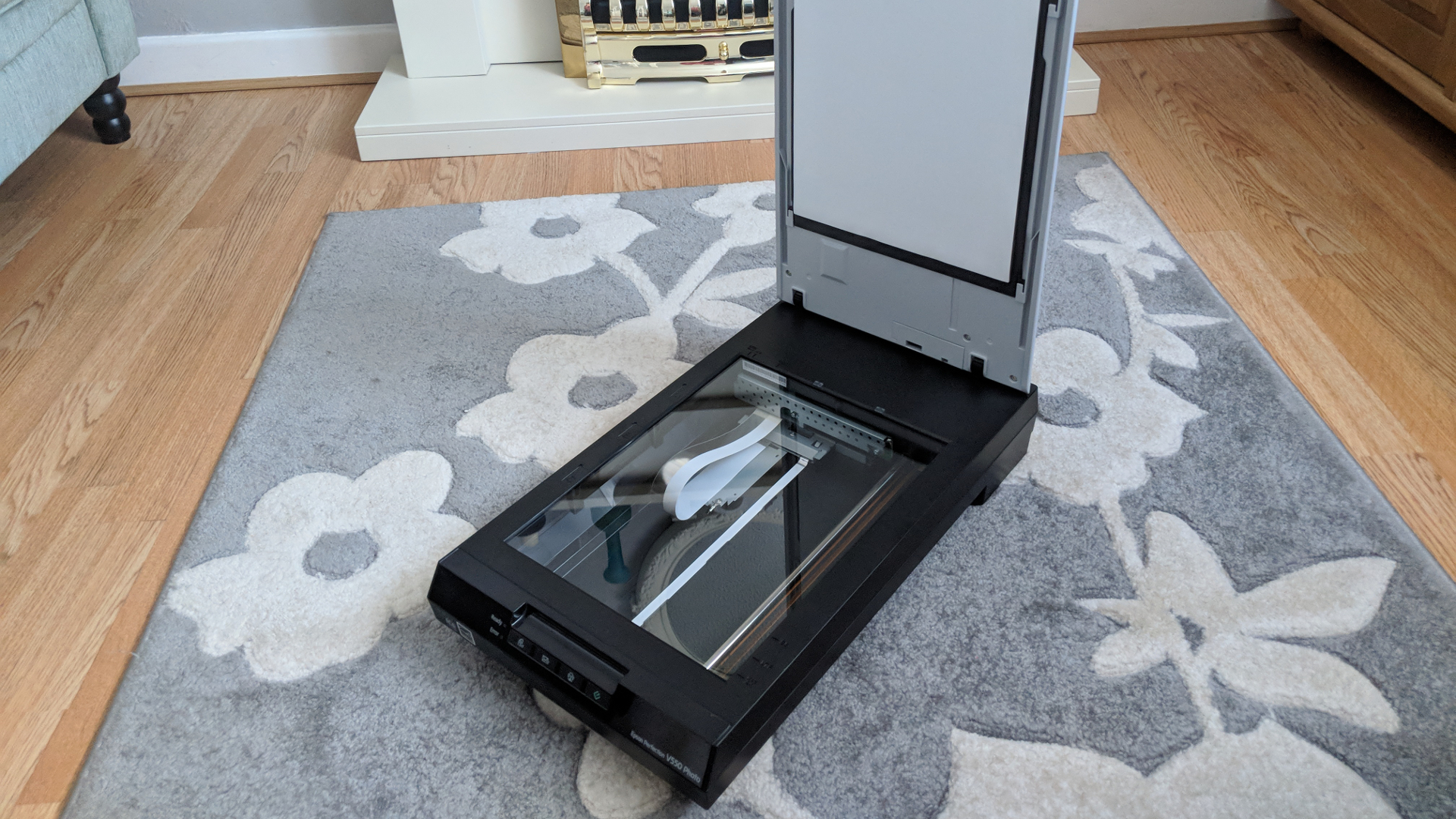TechRadar Verdict
This Epson scanner provides an excellent springboard for a photo-heavy workload with the occasional slide or negative thrown in. It is affordable, produces quality scans and has a decent array of applications. It is bulky, though, and the optional onsite warranty might cause some frowns.
Pros
- +
Versatile
- +
Quality is great
- +
Decent scanning speed
- +
Excellent value for money
Cons
- -
It’s big
- -
Awkward position of power button
- -
Onsite warranty is optional
Why you can trust TechRadar
The fact that Epson has decided to keep this scanner in its product portfolio for five years is a real credit to the Perfection V550 Photo. At the time of writing, there’s no apparent reason for the Japanese manufacturer to retire this workhorse, which has proved to be one of the more popular scanners on the market.
This model sits between the £100 (around $130) Epson Perfection V370 Photo Scanner, launched in 2012, and the £200 (around $260) Epson Perfection V600, launched nearly a decade ago.

All this is a sobering reminder that in this day and age, the traditional remit of standalone scanners is fast shrinking because of the improving optics on smartphones and the vast number of free or cheap scanning apps, which in turn means that new products are not exactly flooding the market.
As for the Epson Perfection V550 Photo, it sells for £169 (around $220) at Amazon, putting it on par with the Canon CanoScan 9000F, the only other widely available scanner that does film scanning – at least in the UK.
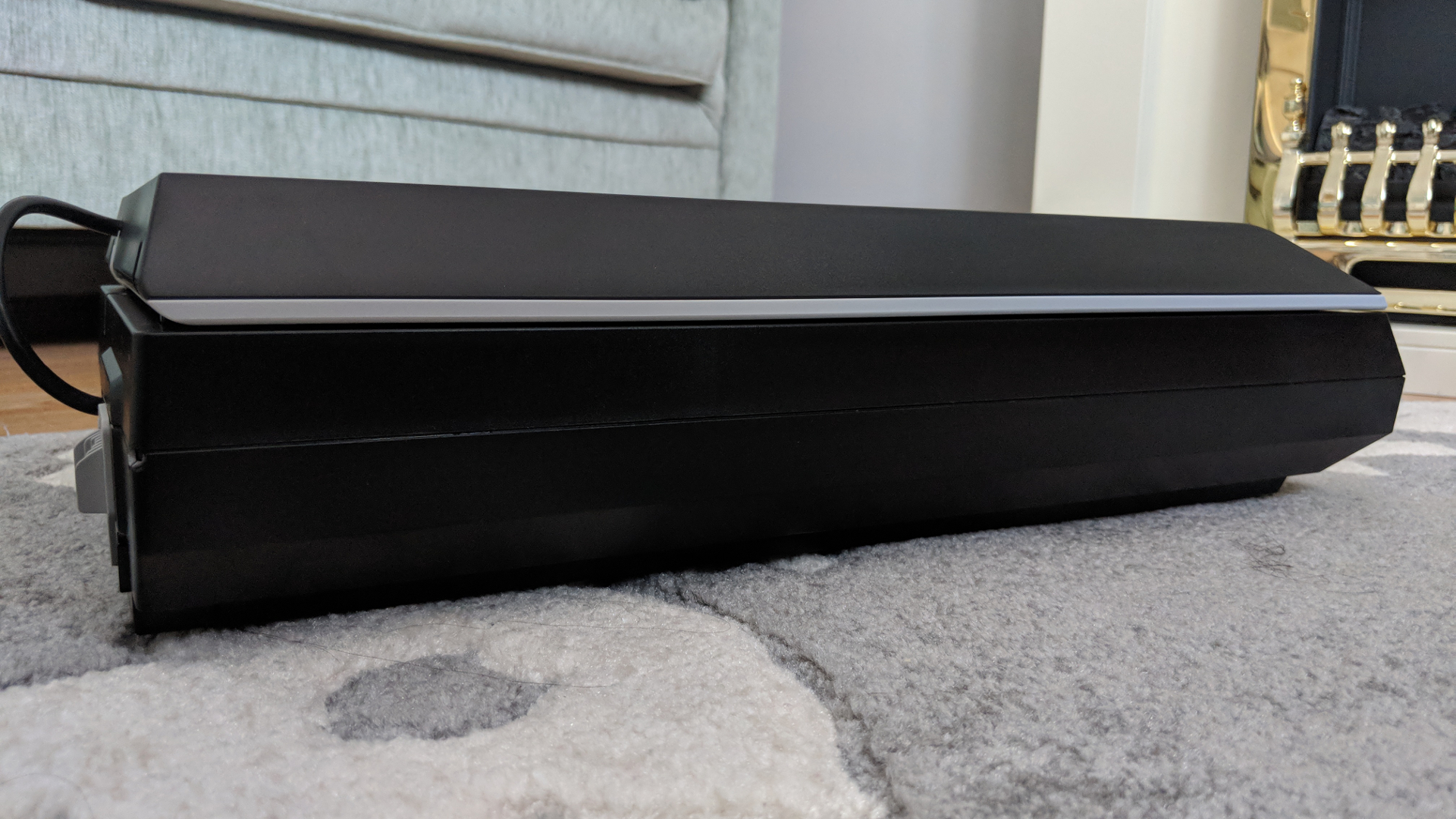
Design and specifications
The V550 is larger than expected – bigger than an A3 sheet – and at 117 x 284 x 485mm, it will take up a significant portion of your desk real-estate.
Note that it is accessed in the traditional way, i.e. opening on the shorter side, which explains why the four customizable control buttons (Scan to PDF, Email, Copy and Start) are located on one of the shorter edges. A green ready and red error light can also be found next to them.
The on/off button is located on the right-hand side of the device, hidden away; probably not the wisest of choices as this isn’t intuitive.
Sign up to the TechRadar Pro newsletter to get all the top news, opinion, features and guidance your business needs to succeed!
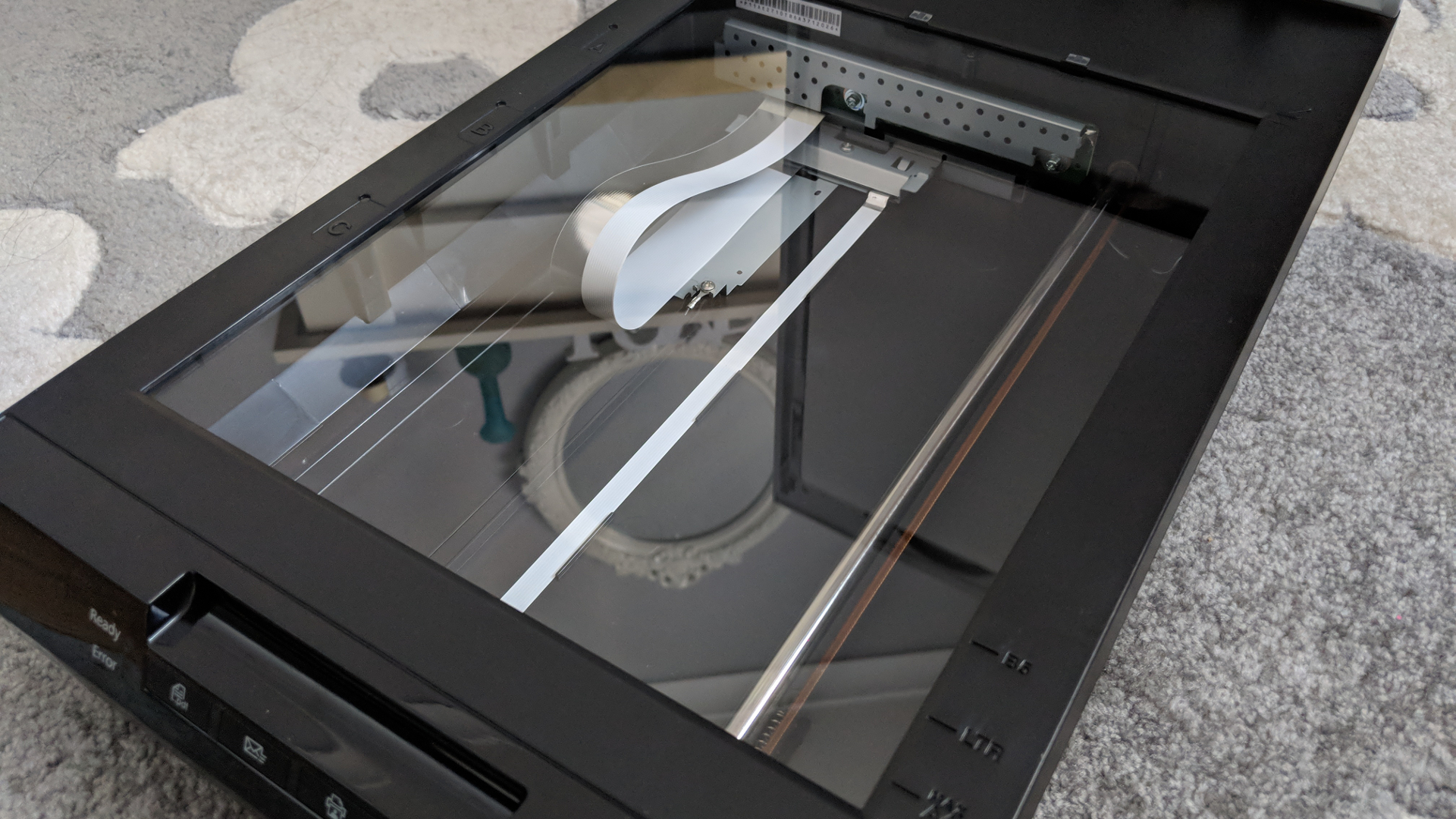
Open the V550 up and you will find a large glass surface – this device is capable of scanning up to 8.5 x 11-inch documents. The built-in transparency unit adds to the bulk thanks to the lamp in the cover of the scanner. You can scan either two 35mm film strips or four 35mm mounted slides – up to 12 negatives at a time.
The scanner has a high Dmax of 3.4 and a maximum optical resolution of 6,400 dpi with interpolated resolutions of up to 12,800 dpi and up to 48-bit color depth. As expected, it uses a USB 2.0 port to connect to the host computer and doesn’t have any fancy features such as Wi-Fi, removable storage or an automatic document feeder (ADF). This is a truly traditional scanner, made for ad hoc digitization.
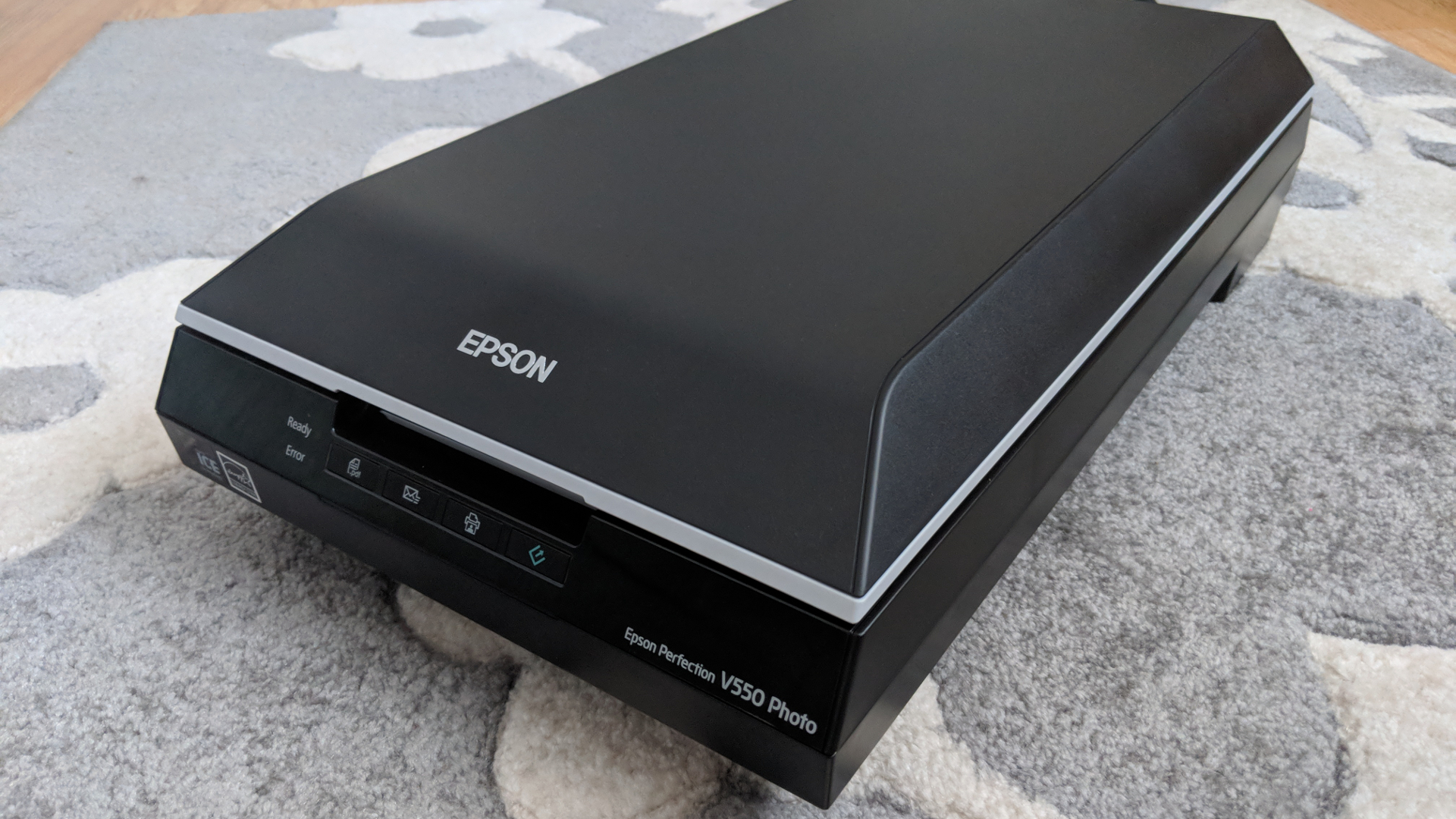
In use
Setting up the V550 Photo is easy – just plug and scan (well, almost). Even if you’re using Windows 10, we’d recommend you install the latest drivers available both as WIA and Twain (the newest one was updated in July 2018, showing how serious Epson is about legacy hardware).
Epson also has a Photo Scan application downloadable online with Abbyy’s Finereader Sprint 9.0 and ArcSoft Scan-n-Stitch Deluxe available on a CD-Rom (remember those)? Epson, like other vendors, should maybe look into killing coasters altogether in the years to come, and should offer downloadable free versions of software instead.

The proprietary image enhancing features – dust removal, ICE (Image Correction and Enhancement) technology, color restoration and film grain equalization – are platform/application agnostic and work reasonably well for those who want acceptable image improvements with as little manual editing as possible.
Furthermore Epson Scan comes with four modes: Full Auto, Home, Office and Professional, all of which can be fully customized.

The scanner uses Epson’s ReadyScan LED technology – which slashes warm-up time and saves power – and comes with a film/slide holder that’s made of plastic and has tabs that align with specific areas to prevent scanning mistakes. It is rather flimsy, though, so make sure you don’t break it when placing your slides.
You can post scans to a fair few photo sharing and social networking services online (Facebook, SugarSync etc) from within the Easy Photo Scan software. Also, the V550 can scan bulky books thanks to an extendable hinge.
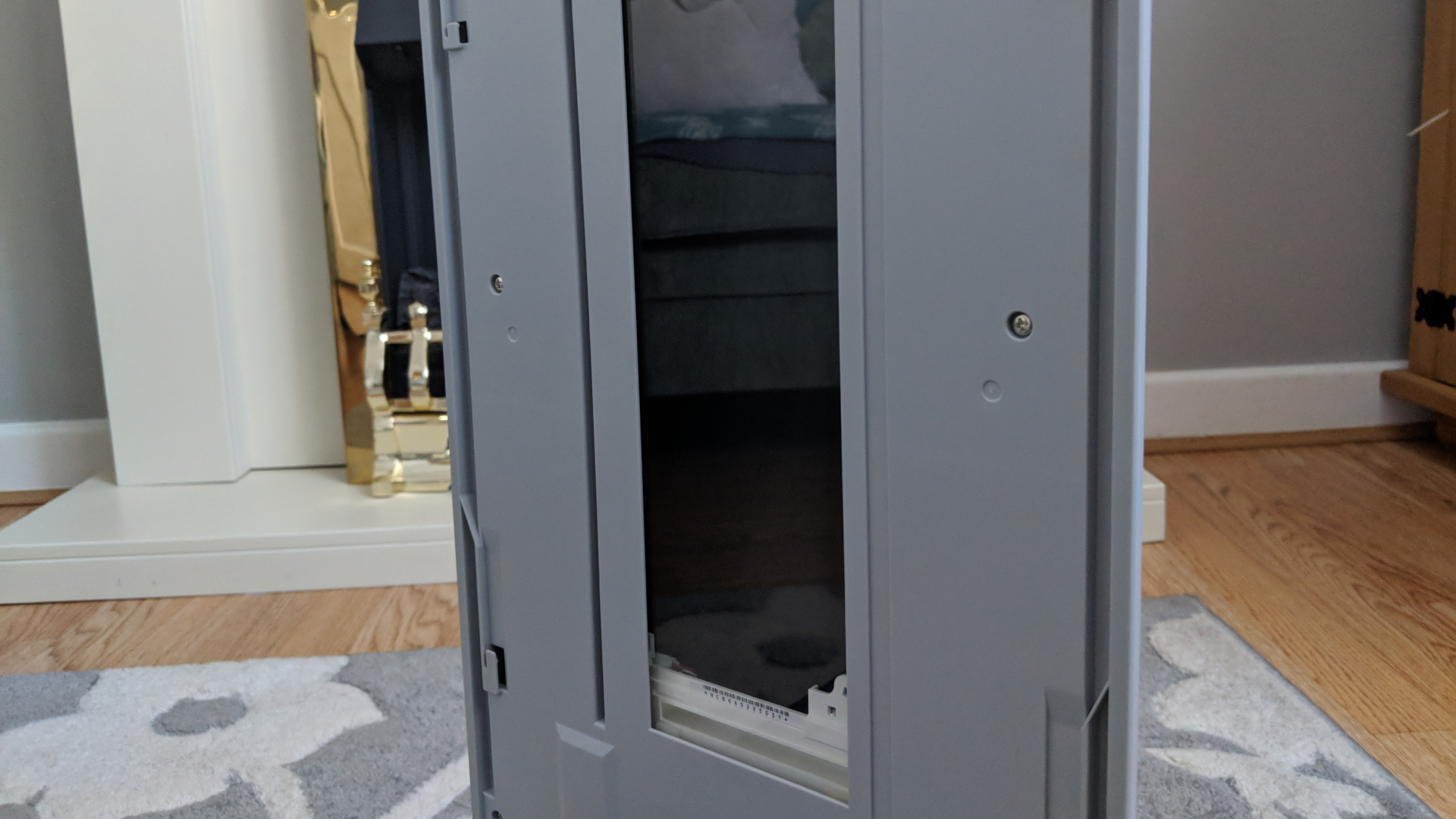
We scanned an A4 sheet at 300 dpi in just over 19 seconds with image enhancement features turned on. Turning these off shaved almost three seconds off that time.
Scanning a 6 x 4 color photo at 1,200 dpi took 1 minute 32 seconds without image correction. We timed 2 minutes 44 seconds for four slides with image correction on – and 3 minutes 26 seconds for five slides without it. Just a warning – this scanner does get fairly noisy, but the noise level is inversely proportional to how quickly the job is done.

Final verdict
Bearing in mind that this is a scanner that can cope with most film slides and costs less than £170 (around $220), it is fair to say that the V550 Photo is a good bargain. Just bear in mind that an onsite warranty is optional – you have pay extra for it (£80 for three-years of cover) or ship (or carry) any item back to the aftersales center.
Then there’s the fact that Epson has another product, the Perfection V370 Photo Scanner, that costs far less (under £100 in the UK), and other than a lower DMax rating and a smaller optical pixel resolution, it’s a potentially more attractive option.
- These are the best scanners of 2018

Désiré has been musing and writing about technology during a career spanning four decades. He dabbled in website builders and web hosting when DHTML and frames were in vogue and started narrating about the impact of technology on society just before the start of the Y2K hysteria at the turn of the last millennium.
